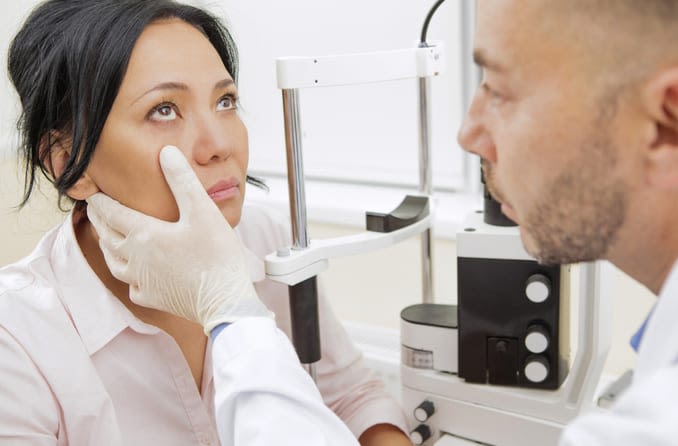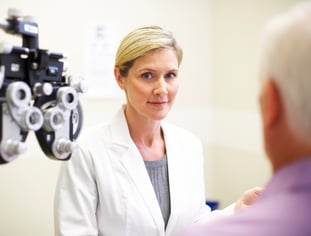Exactly How an Eye Doctor Can Help Prevent Vision Issues in Chino
Exactly How an Eye Doctor Can Help Prevent Vision Issues in Chino
Blog Article
Exploring the most recent Technological Innovations in Optometry and What They Mean for Optometrists
In the ever-evolving area of optometry, recent technical advancements are improving exactly how practitioners come close to eye care. From the accuracy of Optical Coherence Tomography to the nuanced insights offered by AI-driven analysis devices, these technologies are setting new requirements in person analysis and treatment. Teleoptometry is poised to redefine availability, ensuring that proficiency goes beyond geographical constraints. As these developments permeate the technique, eye doctors are confronted with the obstacle of accepting these devices to improve person results. Yet, the question continues to be: how will these technological shifts redefine the roles and duties within the occupation?
Advancements in Diagnostic Equipment
Advancing the field of optometry, developments in analysis tools have reinvented the means eye care specialists examine and detect eye conditions and visual impairments. The past decade has actually observed substantial technical improvements, allowing even more thorough and exact analyses.
An additional trick technology is the introduction of sophisticated corneal topography systems, which map the surface curvature of the cornea with precision. These devices are especially useful for fitting call lenses and detecting corneal problems. Furthermore, electronic retinal imaging has actually changed typical ophthalmoscopy, offering thorough, scenic views of the retina that promote comprehensive visual exams.
The growth of wavefront aberrometry has also been essential, allowing the evaluation of refractive mistakes with unequaled accuracy (Opticore Optometry). This modern technology aids in customizing rehabilitative lenses and enhancing surgical outcomes for refractive surgical treatments. Collectively, these diagnostic advancements equip optometrists to provide exceptional client treatment, ensuring very early intervention and tailored therapy strategies, inevitably boosting visual health results
AI in Individual Administration
Structure on the foundation of sophisticated analysis tools, the unification of expert system (AI) in individual monitoring represents a transformative leap for optometry. AI systems are progressively utilized to enhance performance, accuracy, and customization in person treatment. By examining huge quantities of data, AI can identify patterns and anticipate prospective eye conditions, allowing optometrists to customize interventions better. This capacity is essential in taking care of persistent eye illness such as glaucoma and diabetic person retinopathy, where early detection and constant surveillance are vital.
Moreover, AI-driven systems help with structured individual interactions and management procedures. Automated organizing, virtual assessments, and personalized follow-up strategies not only enhance patient fulfillment but likewise optimize time management for experts. These systems can triage people based on the urgency of their problems, ensuring that those in crucial demand receive punctual interest.
In addition, AI boosts decision-making by supplying optometrists with evidence-based referrals and therapy pathways. By integrating data from digital wellness records, AI tools provide insights that inform medical choices, reducing the risk of errors and boosting person outcomes. As AI continues to progress, its function in individual management will likely increase, reshaping the landscape of optometric treatment.
Breakthroughs in Retinal Imaging
In the world of optometry, retinal imaging has observed exceptional technical improvements that are boosting diagnostic abilities and client treatment. Technologies such as Optical Comprehensibility Tomography (OCT) and fundus photography have actually reinvented exactly how eye doctors envision and analyze the retina. OCT, specifically, offers high-resolution, cross-sectional pictures of the retina, permitting the comprehensive assessment of its layers. This capability is indispensable for early discovery and administration of problems like glaucoma, diabetic retinopathy, and age-related macular degeneration.
Improved imaging methods like OCT angiography are additional refining diagnostic accuracy. This non-invasive strategy maps blood circulation in the retina, offering important understandings right into vascular health and wellness without the demand for dye injections. Additionally, flexible optics technology is being integrated into retinal imaging systems to deal with ocular aberrations, providing unprecedented picture quality. Such innovations help with the identification of min retinal adjustments that could signify illness development.
In addition, improvements in fabricated intelligence are boosting retinal imaging by allowing automated analysis of large datasets. These systems assist optometrists in identifying patterns indicative of pathology, thus boosting diagnostic precision and performance. Jointly, these developments are changing retinal imaging into a cornerstone of modern eye treatment, enhancing outcomes and expanding healing opportunities.
Teleoptometry's Growing Function
Teleoptometry is increasingly ending up being an important part of eye care, driven by advancements in data and diagnostic devices. As optometry welcomes digital change, teleoptometry promotes remote examinations, allowing optometrists to prolong their solutions past typical limits. This is especially advantageous in rural and underserved areas where accessibility to specialized eye treatment is often minimal. By leveraging high-resolution video clip conferencing you can check here and advanced retinal imaging, eye doctors can perform extensive eye examinations from afar, guaranteeing prompt diagnosis and therapy.
The combination of expert system (AI) additional boosts teleoptometry, allowing the analysis of visual information and assisting in the detection of eye conditions such as glaucoma and diabetic person retinopathy. AI-powered formulas can swiftly translate complex imaging information, providing optometrists with important insights that bolster professional decision-making.
Moreover, teleoptometry supports continuity of treatment via seamless combination with electronic health documents (EHRs), permitting optometrists to maintain extensive client histories. When consulting with different practitioners., this makes certain that individuals get constant and customized care also.
Regardless of these benefits, obstacles remain, consisting of making certain data safety and taking care of person assumptions. Nonetheless, teleoptometry represents a substantial stride in the direction of more easily accessible, effective, and patient-centered eye treatment. As modern technology progresses, its function is poised to expand further.

Future Trends in Eye Care
A myriad of cutting-edge trends is readied to reshape the future of eye care, driven by technological improvements and the developing demands of clients. One significant trend is the assimilation of man-made knowledge (AI) in diagnostics, which guarantees to improve the precision and performance of eye evaluations. AI algorithms can analyze large amounts of data from retinal photos, possibly discovering conditions like diabetic retinopathy and glaucoma earlier than traditional methods.
Additionally, customized medication is gaining grip in optometry, with genetic screening notifying customized treatment plans. This approach aims to maximize client results by tailoring treatments to individual hereditary profiles. Wearable modern technology, such as wise get in touch with lenses, is also on the horizon, providing real-time monitoring of intraocular pressure or sugar levels, thus providing constant understandings into systemic and eye health and wellness.
The fostering of augmented reality (AR) and digital truth (VIRTUAL REALITY) in training and individual education is an additional arising fad. These technologies use immersive experiences that can enhance understanding and abilities both for patients and optometrists. As these trends advance, optometrists must remain abreast of technological advancements to supply advanced treatment, guaranteeing better client results and contentment in the dynamic landscape of eye care.
Verdict

Collectively, these analysis advancements equip eye doctors to supply remarkable patient treatment, ensuring very early intervention and customized treatment methods, eventually improving visual health and wellness end results.

As these technologies proceed to progress, optometrists must adapt and integrate them right into technique, eventually maximizing process effectiveness and elevating the requirement of eye care provided to individuals.
Report this page